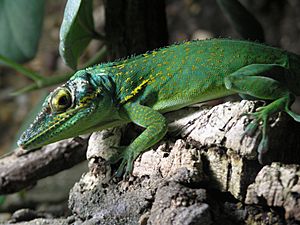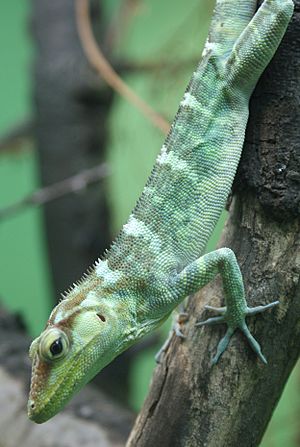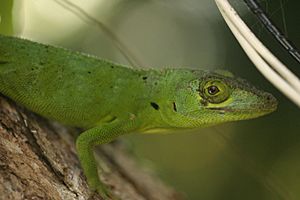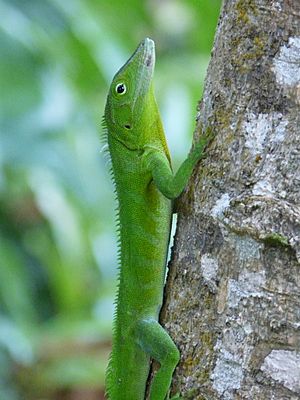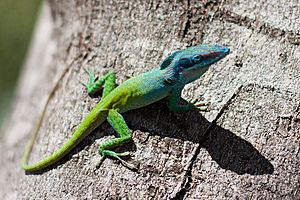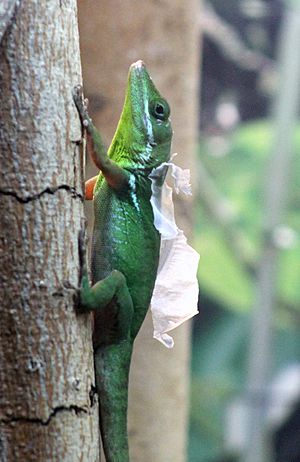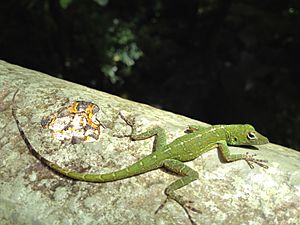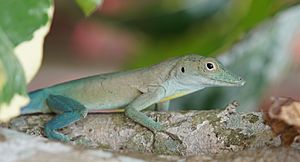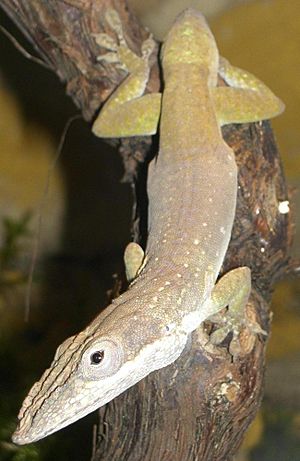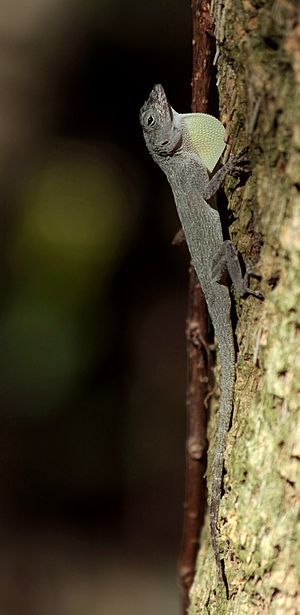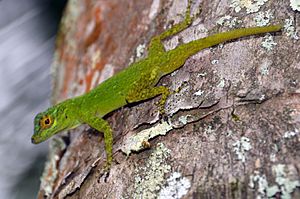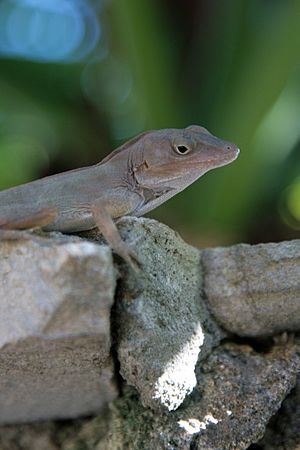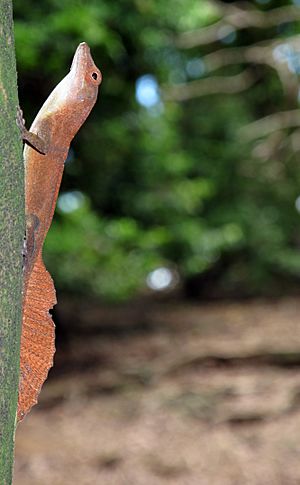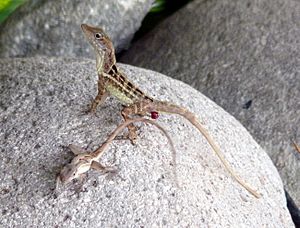Anolis ecomorphs facts for kids

The idea of an ecomorph was first used by a scientist named Ernest Edward Williams in 1972. He said it means different animal species that live in the same kind of place (habitat) and act in similar ways. They might even look alike, but they aren't necessarily closely related in their family tree.
Williams first noticed this with anoles (a type of lizard) on islands like Puerto Rico. He saw how they changed and developed into many different forms. Anoles have often evolved into similar shapes and sizes on different islands. This is a great example of convergent evolution, where different species develop similar traits because they live in similar environments.
Scientists like Jonathan Losos have described six main anole ecomorphs. These are based on where the anoles mostly live, such as in grasses, on the ground, or on different parts of trees. The six types are: crown giant, trunk-crown, trunk, trunk-ground, twig, and grass-bush.
Crown Giant Anoles
These anoles live high up in the very tops of trees, in the "crown" or canopy. They are usually quite large lizards with big heads. They also have special wide toe pads (called sub-digital lamellae) that help them grip branches. Most crown giant anoles are green.
Some crown giants have long legs and jump from tree to tree. Others have shorter legs and mostly crawl. Because they are big, these anoles can eat many things. This includes smaller lizards, small birds, and even fruit. Even though they all look similar, their sizes can be very different from one island to another.
| Species | Image | Where They Live |
|---|---|---|
| Anolis baracoae | Baracoa, Cuba | |
| Anolis ricordii | Hispaniola | |
| Anolis cuvieri | Puerto Rico | |
| Anolis garmani | Jamaica, also found in Florida and the Cayman Islands |
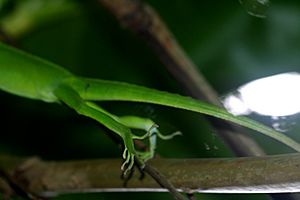
Trunk-Crown Anoles
Trunk-crown anoles live on the upper parts of tree trunks and in the lower branches of the tree canopy. They are usually found several meters off the ground. These anoles are often green. They have large toe pads and short, strong legs that help them climb trees.
They mostly eat small insects that live in trees. Some have also been seen eating fruits and nectar. Their heads are flat and triangular, which might help them drink nectar. Trunk-crown anoles can change their color a lot. They can turn very dark when they are stressed. They can also become light brown or grey to control their body temperature. Other anoles can change color too, but usually not as much as these.
| Species | Image | Where They Live |
|---|---|---|
| Anolis allisoni | Cuba | |
| Anolis coelestinus | Hispaniola | |
| Anolis evermanni | Puerto Rico | |
| Anolis grahami | Jamaica, also found in Bermuda |
Trunk Anoles
Trunk anoles are found mainly on the islands of Cuba and Hispaniola. However, one species, A. distichus, also lives in the Bahamas and has been introduced to Florida. These are medium-sized anoles. They have short legs and tails, and small, triangular heads. As their name suggests, they live mostly on the trunks of tall trees. Their main food is ants.
| Species | Image | Where They Live |
|---|---|---|
| Anolis distichus distichus | Hispaniola, also found in Florida | |
| Anolis distichus ignigularis | Hispaniola |
Trunk-Ground Anoles
Trunk-ground anoles usually sit on the lower part of tree trunks or on rocks right below the tree. They often face downwards to look for insects on the ground. When they spot food, they jump down to catch it. Then they quickly go back up the tree. These anoles will also eat smaller lizards or young anoles if they get the chance.
Trunk-ground anoles are strong and often have large heads. They also have long legs, which help them jump. These anoles are mostly brown. They can change to lighter or darker shades of brown depending on how they feel or their body temperature.
| Name | Image | Where They Live |
|---|---|---|
| Anolis sagrei | Cuba, Little Cayman and the Bahamas, also found in Florida, Texas, Costa Rica, Hawaii, Jamaica, Singapore, St. Maarten, Barbados, Grenada and the Grenadines, Aruba and Taiwan | |
| Anolis cybotes | Hispaniola, also found in Florida and Suriname | |
| Anolis cristatellus | Puerto Rico, also found in Florida, Dominica, the Dominican Republic and St. Martin | |
| Anolis lineatopus | Jamaica |


